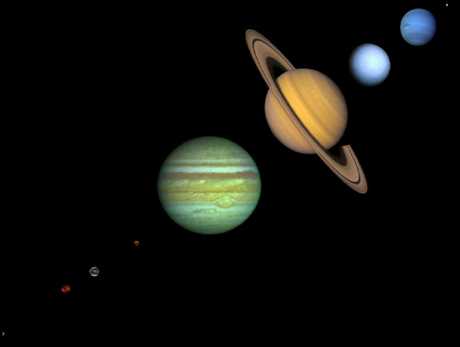
Energy

|
Mass and Energy |
Until the time of Einstein, mass and energy were two separate things. In the special theory of relativity Einstein demonstrated that neither mass nor energy were conserved seperately, but that they could be traded one for the other and only the total "mass-energy" was conserved. The relationship between the mass and the energy is contained in what is probably the most famous equation in science,
E = m c 2
Because the speed of light squared is a very large number when expressed in appropriate units, a small amount of mass corresponds to a huge amount of energy. Thus, the conversion of mass to energy could account for the enormous energy output of the stars, but it is necessary to find a physical mechanism by which that can take place.
Einstein himself originally thought that it might be impossible to find a physical process that could realize the potentiality embedded in his equation and convert mass to energy in usable quantities. In the nuclear age, we now know (both for better and for worse) that he was too pessimistic; there are several physical processes that can accomplish this.
The stars are at enormous distances from us, yet we can see thousands in the sky without the aid of a telescope. This tells us that the stars are extremely luminous. We must then ask what the source of their enormous energy could be.
Given what we know about stars like the Sun, there are two possible sources of such energy: (1) gravitational contraction and (2) thermonuclear reactions that convert mass to energy. Both play important roles in producing energy over the lifetime of a star, but the primary reason for the long stable period of a star's life is thermonuclear fusion. This fundamentally involves the conversion of mass to energy. The Nobel prize for understanding this process in detail for stars was given to Hans Bethe in 1967 for work he completed on this topic in 1939 and later. (Hans Bethe was actie into his late 90s while a retired professor at Cornell. His career was one of the longest in the history of science. He published his first paper in 1927 at the age of 21 and died in 2005.)
Although Bethe did win the Nobel prize, the realization that fusion could power stars along with the first quantitative calculations actually preceded Bethe's work actually preceded Bethe's work by a decade. The credit for the first calculations goes to Fritz Houtermans and Robert d'Escourt Atkinson for their joint paper in 1929. (Atkinson, R. and Houtermans, F. 1929, Aufbaumöglichkeit in Sternen, Z. für Physik 54 656-665)
The following link (kindly pointed out to me by Daniel Wilkins, Univ. Nebraska Omaha): Stars and Romance summarizes an amusing (and perhaps apocyphal) story about Houtermans and his girlfriend Charlotte Riefenstahl. One source given for the story on that page is the book by Edward Dolnick called "The Clockwork Universe" pp 67-8, from which the actual quote is:
"The night he finished the work, he and his girlfriend went for a stroll. She commented on how beautiful the stars were. Houtermans puffed out his chest. “I’ve known since yesterday why it is that they shine.” And no one else did. That was the point..."